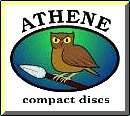Well done to all concerned for a delightful disc of attractive and unfamiliar
music.
Jan Ladislav Dussek was born in Caslav, Bohemia in 1760 and died at St
Germain-en-Laye, France in 1812. His early career was as a virtuoso pianist
in Amsterdam. He moved on to composition, studying with C P E Bach. He lived
in London from 1790-1800 and worked for various royal patrons in the last
decade of his colourful life. He had a rewarding friendship with Haydn whom
he had met in London.
His interest in the harp was encouraged by the harpist, Anne-Marie Krumpholz
the wife of the Bohemian harpist and composer Johann Krumpholz (1745-1790)
who drowned himself in the Seine because of his wife's infidelity with Dussek.
In 1792, Dussek married another harpist, Sophia Cori but then due to mounting
debts and unsuccessful business with his father-in-law he fled to Hamburg
in 1800. A decade earlier, he had fled from Paris at the commencement of
the French Revolution afraid for his life because of his connection with
the Royal Family and the high esteem that Marie Antoinette had for him.
Dussek was a prolific composer of 28 piano sonatas, 15 piano concertos, 38
violin sonatas, 16 flute sonatas, a mass, piano trios and a concerto for
two pianos. His music has a Mozartian charm but with that added ingredient
of a refreshing outdoors rusticity as seen, for example, in say the wind
quintets of the Moravian composer, Franz Krommer (1759-1831) and the Benda
family, also from Bohemia, namely František (1709-1786), Jiri (1722-1795)
and Josef (1724-1804).
The Duo in B flat is in three movements the first of which is particularly
good although Allegro con fuoco does not seem very harp-like. I detect
a quasi-military style at times, as if the French Revolution is on his mind,
but this gives way to a pastoral scene. The second movement also has an
occasional military style with echos of drum rolls and seems to have a funeral
message. But it is neither miserable nor depressing but intriguing . The
finale is a dance movement very relevant to its time.
The Duo in F is also in three movements and probably more virtuosic
than the one in B flat but is also more lyrical and has a captivating charm.
The opening big Allegro moderato is an excellent example of classical
form, a coherence that is rather denigrated these days. The slow movement
is very expressive with a contrasting fortissimo passage. The finale
is a rondo with episodes that may detract from its continuity, but there
are many fine moments to relish.
The Sonata in F sharp minor is an elegy of the death in 1806 of his
patron Prince Louis Ferdinand killed at the battle of Saalfeld. It is a very
'free' piece expressing the composer's grief and his mood swings. It is
biographical and, I suppose, programme music to some extent which device
does not appeal to everyone because they 'cannot follow the story' or the
composer's narrative. But that is not necessary. Music succeeds on its quality
as music, not its storyline ... if it has one.
The performances are convincing and will give endless delight to many. It
may not be the greatest music but it is as refreshing as a clear mountain
stream.
Reviewer
David Wright
Performances

Recording

|
Visit
Athene
|
|
 |
